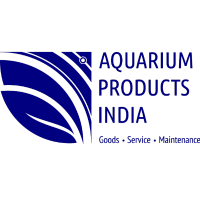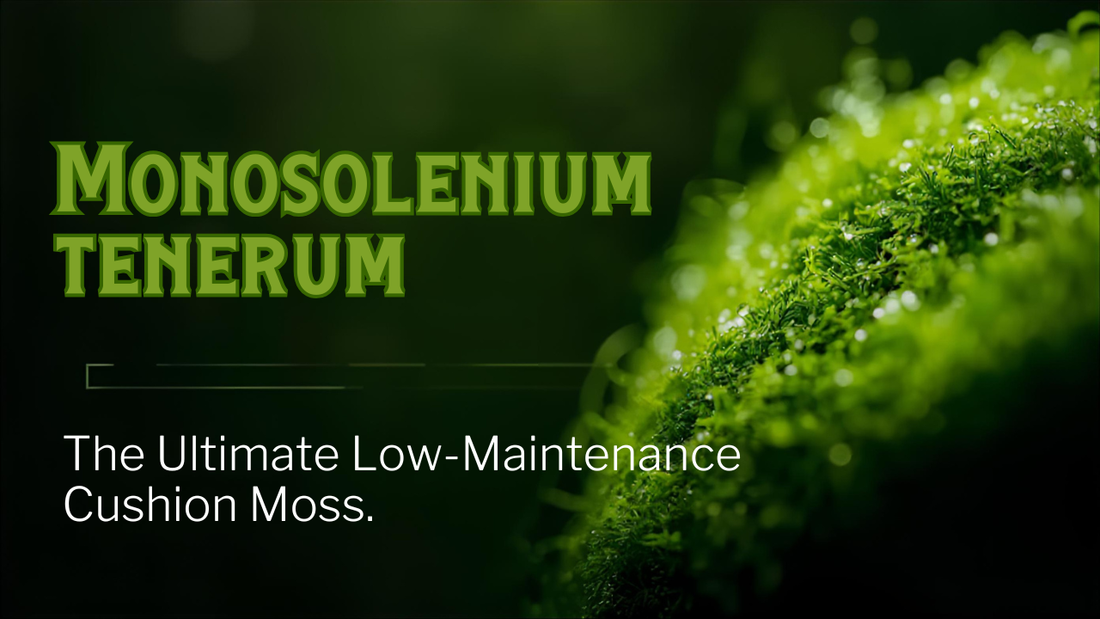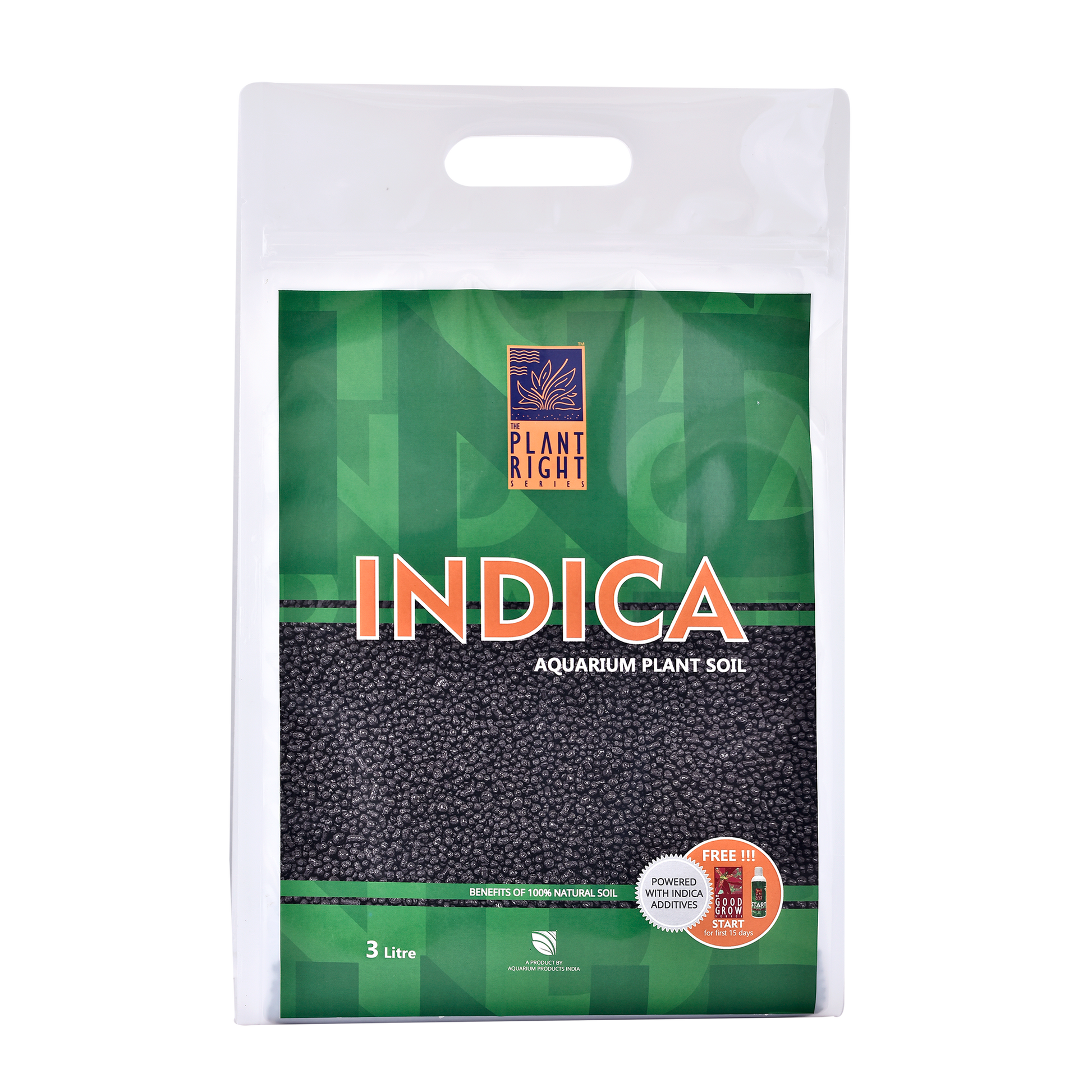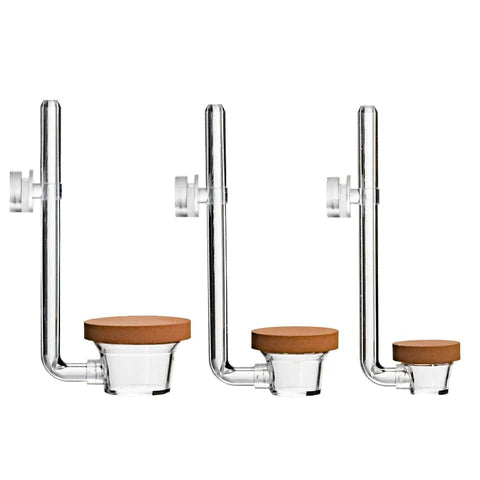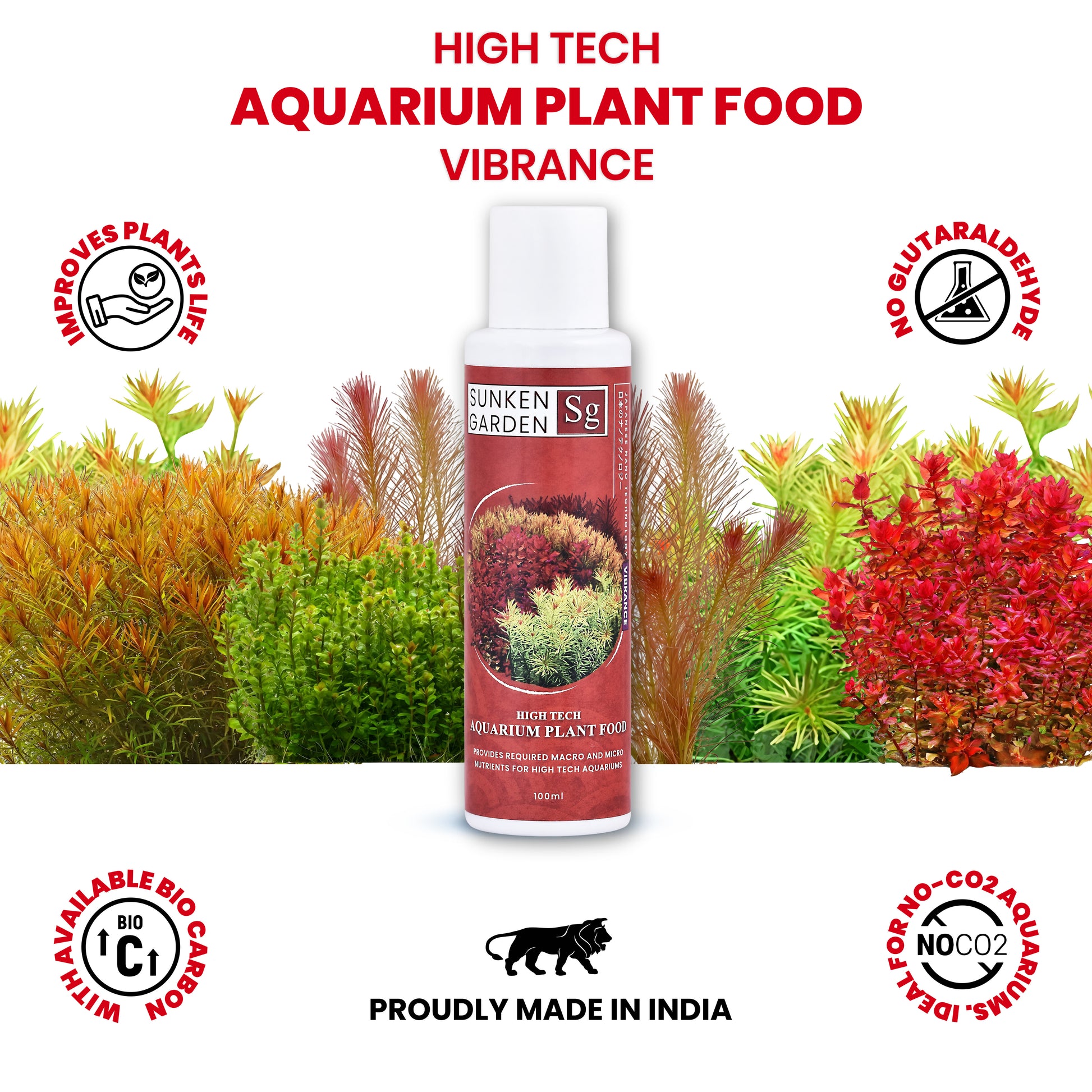1. Taxonomy and Basic Characteristics
- Kingdom: Plantae
- Division: Marchantiophyta (Liverworts)
- Class: Marchantiopsida
- Order: Marchantiales
- Family: Monosoleniaceae
- Genus: Monosolenium
- Species: Monosolenium tenerum
- Binomial Name: Monosolenium tenerum Griff.
Monosolenium tenerum is the only species in its genus and family, making it a monotypic genus and family. It is often called "Pellia" in the aquarium trade, but true Pellia is a different genus. It is sometimes confused with Süsswassertang, which is actually a fern gametophyte, not a liverwort
Morphology:

- Grows as a flat, forked thallus (not true leaves or stems), forming cushion-like mats.
- Color: Dark to olive green, slightly translucent.
- Texture: Brittle and fragile; easily breaks apart.
- Size: Thallus typically 2–5 cm high in aquariums, wider and flatter when grown emersed
Ecology:
- Native to East Asia (India, Nepal, China, Taiwan, Japan, Hawaii).
- Grows on moist, shady, nitrogen-rich soils, often near human settlements.
- Rare in the wild but common in cultivation due to its adaptability
Adaptations:
- Forms weak rhizoids for anchorage, but these are not very effective underwater.
- Heavier than water, so it stays on the substrate rather than floating
.
2. Optimal Water Parameters
|
Parameter |
Optimal Range |
Tolerance Range |
|
Temperature |
18–28°C (64–82°F) |
5–30°C (41–86°F) |
|
pH |
5.0–7.5 |
5.0–8.0 |
|
General Hardness |
0–30°dGH |
0–30°dGH |
|
Carbonate Hardness |
0–14°dKH |
0–14°dKH |
Export as CSV
- Highly adaptable to a wide range of water parameters.
- Best growth and appearance are achieved within the optimal ranges above
3. Light Requirements and CO₂ Needs
-
Light:
- Moderate light is ideal (PAR 20–40 µmol/m²/s at substrate).
- Photoperiod: 8–10 hours/day.
- Can tolerate some shading but grows best with moderate, indirect light.
- Too much light can cause algae; too little leads to sparse growth
-
CO₂:
- Low to moderate demand; grows without CO₂ injection but benefits from supplementation.
- CO₂ levels of 15–30 mg/L (ppm) are recommended for optimal growth.
- CO₂ supplementation is especially beneficial in high-light setups
4. Substrate Preferences and Planting Methods
-
Substrate:
- Does not require nutrient-rich substrate; absorbs nutrients from the water column.
- Inert substrates (sand, gravel, aquasoil) are suitable.
- Avoid burying the plant to prevent rot
-
Planting Methods:
- Place loosely on hardscape (rocks, driftwood) or on the substrate surface.
- Secure with mesh, fishing line, or plant weights until established.
- For carpeting, sandwich between mesh layers and place on substrate
.
5. Fertilization and Nutrient Requirements
-
Macronutrients:
- Requires nitrogen, phosphorus, and potassium, but not in excessive amounts.
- Over-fertilization can lead to algae issues.
-
Micronutrients:
- Iron is important for color and growth; trace elements are needed in small amounts.
-
Fertilizer Application:
- Use comprehensive liquid fertilizers 1–3 times per week.
- Root tabs are unnecessary; Pellia absorbs nutrients from the water.
- Adjust dosing based on tank conditions and plant response
6. Growth Patterns, Maintenance, and Trimming
-
Growth Pattern:
- Flat, mat-forming, slow to moderate growth.
- Non-attaching; may anchor loosely but can be dislodged by strong currents.
-
Maintenance:
- Keep water clean; Pellia is sensitive to debris and detritus.
- Gentle water flow is preferred.
- Regularly remove debris and trim mats to prevent decay and algae.
- Avoid overcrowding to ensure good water circulation .
-
Trimming:
- Use sharp aquascaping scissors.
- Trim upper layers and remove decaying parts.
- Do not over-trim; limit to about one-third of the mat at a time
.
7. Propagation Methods
-
Division:
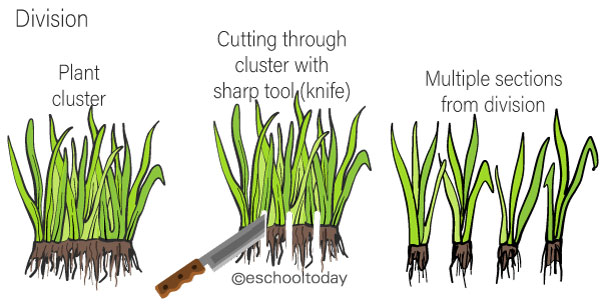
- The most common method; simply break off a portion and relocate or secure it elsewhere.
- Attach to hardscape with mesh, thread, or fishing line if needed.
-
Emersed Propagation:

- Can be grown emersed in a humid environment for rapid multiplication.
-
Natural Reproduction:

- Produces gemmae (asexual propagules) in splash cups, but this is less common in aquariums
.
8. Aquascaping Applications and Placement Strategies
-
Foreground/Midground Carpeting:
Forms dense, cushion-like mats ideal for the foreground or midground.
Used to soften the base of rocks or driftwood in Nature Aquarium and Iwagumi styles.
-
Accenting Hardscape:
Attach to rocks, driftwood, or vertical surfaces for a cascading effect.
Mesh can be used for uniform carpets or vertical walls
-
Shrimp and Fry Habitat:
Dense growth provides cover and grazing surfaces for shrimp and fry
-
Placement Tips:
Secure with mesh or line to prevent floating.
Use in open, well-lit areas and avoid overcrowding.
Combine with other mosses or ferns for varied texture
.
9. Common Problems, Diseases, and Solutions
|
Problem |
Symptoms/Signs |
Causes & Solutions |
|
Melting/Disintegration |
Thalli become mushy, translucent |
Acclimate slowly, maintain stable water, ensure nutrients and CO₂ [[melting]] |
|
Algae Overgrowth |
Algae covers plant, stunted growth |
Reduce light, balance nutrients, increase flow, add algae-eaters [[algae]] |
|
Detachment/Floating |
Plant floats away |
Secure with mesh/line, place in low-flow areas [[detachment]] |
|
Yellowing/Browning |
Thalli turn yellow/brown |
Dose micronutrients, ensure light, trim dead parts [[yellowing]] |
|
Pest Infestation |
Snails, planaria, etc. |
Quarantine new plants, manual removal, avoid harsh chemicals [[pests]] |
|
Fungal/Bacterial Issues |
Spots, fuzzy growth, rapid decay |
Improve water quality, remove affected parts, ensure circulation [[fungal]] |
|
Overcrowding |
Shading, die-off in lower layers |
Trim regularly, avoid crowding, ensure light and flow [[overcrowding]] |
Export as CSV
10. Expert Tips and Advanced Cultivation

- Environmental Control: Use automated systems for stable temperature, pH, and CO₂ in high-value setups.
- Lighting: Full-spectrum LEDs promote lush growth; adjust intensity to avoid algae.
- CO₂: Supplemental CO₂ is recommended for robust, fast growth.
- Trimming: Bi-weekly inspection and trimming prevent rot and maintain appearance.
- Fertilization: Use balanced liquid fertilizers; foliar feeding is more effective than root tabs.
- Algae Management: Maintain balance of light, nutrients, and CO₂; introduce algae-eating fauna.
- Documentation: Keep records of parameters and routines for troubleshooting and optimization
.
Summary Table
|
Aspect |
Details |
|
Taxonomy |
Monosolenium tenerum, monotypic liverwort |
|
Growth Pattern |
Flat, mat-forming, slow/moderate, non-attaching |
|
Water Parameters |
Temp: 18–28°C, pH: 5.0–7.5, GH: 0–30°dGH, KH: 0–14°dKH |
|
Light/CO₂ |
Moderate light, 8–10h/day, CO₂ optional but beneficial |
|
Substrate |
Inert, not substrate-dependent; avoid burying |
|
Fertilization |
Liquid fertilizer 1–3x/week; focus on macros and iron |
|
Propagation |
Division, emersed growth, gemmae (rare in aquaria) |
|
Maintenance |
Clean water, gentle flow, regular trimming, debris removal |
|
Aquascaping |
Foreground/midground, hardscape accent, shrimp/fry habitat |
|
Common Problems |
Melting, algae, detachment, yellowing, pests, fungal/bacterial issues |
PRODUCT LINKS :
INDICA AQUARIUM SOIL :
CO2 DIFFUSER KIT :
Aquascaping Glue: https://aquariumproductsindia.in/products/aquascaping-plant-moss-super-glue-5g
